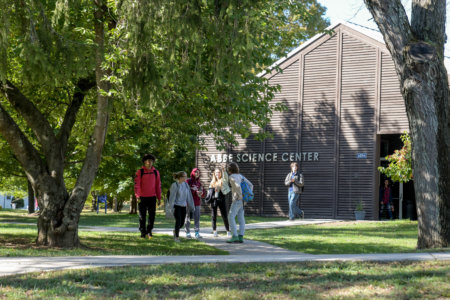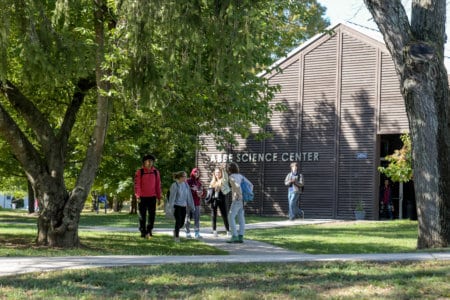The nature of work is changing. Experts at McKinsey Global Institute predict that the explosive growth of generative artificial intelligence (AI) technology has expanded the potential to automate more jobs. Data jobs require more soft skills, such as creativity, teamwork and problem-solving, another Deloitte report found.
Nestled on a rolling 140-acre campus in the Pennsylvania countryside, Solebury School prepares young learners to embrace this digital future through its unique computer science programme — just hear from students like Sam Peckman.
“I honestly like all of school, but this is the field I want to go into, so I love the opportunity to work on things like this in high school,” says Sam. “I think the field of computer science perfectly fuses the mathematical side of things with the artistic and creative side of things, and I really like that.”

Classes follow a current, relevant and cutting-edge curriculum that encourages students to interact with the technology that they have grown up with. Source: Solebury School
Here, the school has found the ideal balance that develops well-rounded graduates prepared for the future of work. Those with no experience in computers can get a foundational, hands-on introduction, whereas students with prior experience can take advanced classes or complete independent studies through several online courses in topics such as data science, mobile app design, and introduction to artificial intelligence.
“We now have a programme where you can take computer science classes all four years of high school, if you want,” says Cari Nelson, the head of Solebury School’s Science Department. “And it’s not just what we offer in the academic bulletin. If you have an interest, we will help you pursue that interest.”
There is also a layered programme that features two year-long Advanced Placement courses, as well as unique electives in Game Design, Cybersecurity, Robotics, and Graphic Design.
Such flexibility is paired with modules designed to provide learners with a solid grounding in various aspects of computer science. Take Digital Filmmaking, Script to Screen, for example. This year-long course gets students to write, produce, and edit short films. They learn lighting, digital cinematography, audio recording, and non-linear editing.
During graphic design classes, students can learn the elements of two-dimensional design as they create posters, logos, business cards and book covers. They turn digital illustrations into three-dimensional objects using laser cutters to produce keychains, engraved signs, and even light fixtures.
In the classroom, a big part of the learning process is through trial and error. Walk into the Idea Lab — the aptly named space where computer classes are taught — and you likely would see that lessons have an unscripted quality. Here, students collaborate, tinker and test. The focus is on critical thinking and creativity.

Talk to any computer science student at Solebury School and they will likely choose a variation of this one word to describe their classes: fun. Source: Solebury School
Class of 2025 student Rustam Ismailov had the chance to build and code a live chat. Throughout this process, the international student from Ukraine was free to work on this project whilst seeking help from teachers who acted as mentors — who may not have all the answers immediately.
Where they shine is in their patience, dedication, and passion to teach. “If they’re building out a project with many layers to it, I’ll work with a student for hours trying to troubleshoot,” says teacher Andrew Piccolo. “I don’t always have the solutions readily handy. Even if you’ve been at it a long time, sometimes the errors are not always obvious.”
Many students call their computer classes the highlight of their day. “On days when I have computer science, it almost feels like a break from the rest of the academic day,” says Class of 2026 student Quinn Lovely. “I feel like class is taught in a way that you can explore what you want and do it in a way that you think is fun.”
Computer science students at Solebury School are not afraid to push their limits. Ismailov, who plans on pursuing software engineering or data science in college, believes the challenging assignments are part and parcel of learning the technicalities in this ever-changing field.
It’s an approach that works. Through these hands-on learning opportunities, students become proactive thinkers, problem solvers, and resilient graduates — skills that are equally valuable even if they don’t pursue a career in computer science after leaving Solebury School.
Perhaps that is why the Idea Lab is never empty. “It’s always buzzing in there,” Nelson shares. “They’re in there after school hanging out and working on things on their own time because they want to be there.”
Click here to learn more about the computer science programme at Solebury School.
Follow Solebury School on Facebook, Instagram, YouTube, and LinkedIn












